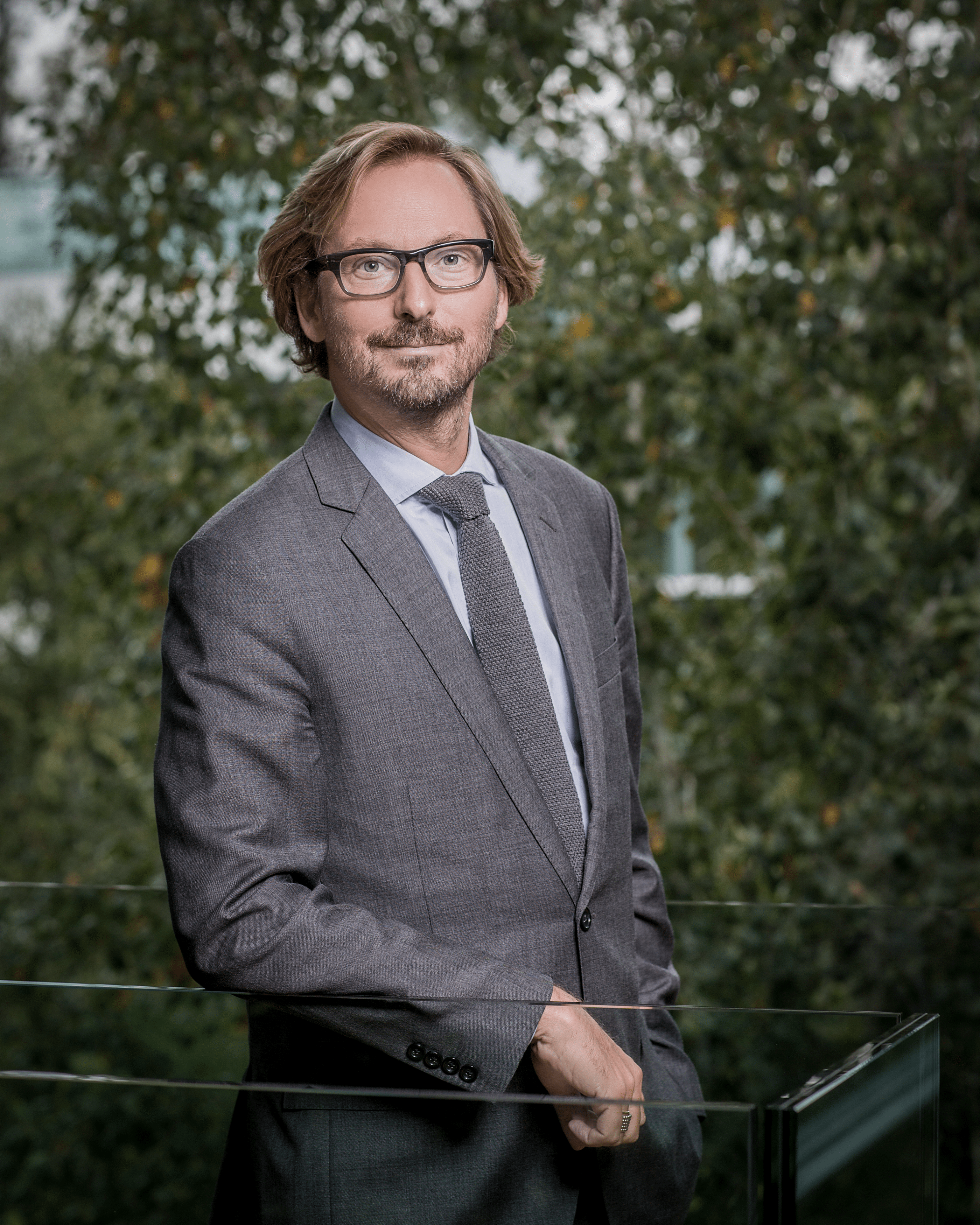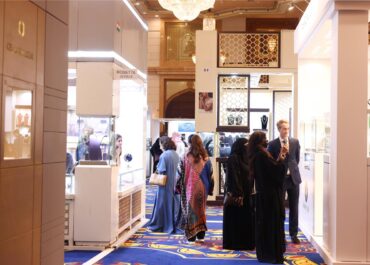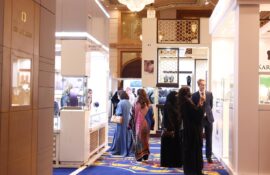With a history dating back to 1875, Van Cleef & Arpels is one of the oldest Jewellery Houses in the world. With a rich heritage rooted in craftsmanship and creativity, the brand has many beautiful stories intertwined in its DNA and it continues to keep this at the heart of everything it does.

Nicolas Bos
Today, with the world changing so quickly and technology and innovation prevailing in all industries, there is a fine balance that needs to be maintained to preserve this beautiful history and DNA, but still ensure that the brand continues to be relevant and keeps up with constant developments in technology, communication, and craftsmanship. Tasked with finding this sweet spot is the brand’s President and CEO Nicolas Bos who has been leading Van Cleef & Arpels for a decade. Before becoming President in 2013, Bos had been working with the brand in various roles since 2000 and so truly understands the values of the Maison and the importance of preserving this, as well as moving forward in a way that is right for the jeweller. As Van Cleef & Arpels prepares to reveal its latest novelties at this year’s edition of Watches & Wonders, we talk to Nicolas Bos to find out more about finding this perfect balance between heritage and modernity.

You have been President and CEO of the brand for a decade – congratulations on this and tell us what you feel you have achieved in the past ten years.
Thank you, I am very proud that, with all the teams, we’ve managed to stay true to our identity and history and write new chapters of it. Some of them were about development, and some of them were about continuity. I am proud of certain exhibitions and initiatives like L’ÉCOLE, School of Jewellery Arts, or Dance Reflections by Van Cleef & Arpels, that support our core values. I also am proud of certain High Jewellery collections and product categories, like the Poetic Complications collection, initiated about a decade ago, which is fully in line with the Maison’s identity. There is a great tension between tradition and innovation at Van Cleef & Arpels, between respecting our history and renewal. I believe we have done a good job, and that makes me happy.
What is your vision and focus for the next ten years?
I think what really matters for us is that we are and wish to remain experts in certain fields. For more than a century, we have been jewellers and retailers. This is how we want to remain. We are not a global brand; we are not the incarnation or translation of a certain lifestyle. We are about inspiration, craftsmanship and retail distribution. Of course, all this is evolving, the world is changing, and we must try to understand trends and go along with them, sometimes also maybe initiate new ones. But we will always do that with the maintained perspective of an expert that really operates in the field of jewellery and a certain form of watchmaking, which is once again very rooted in our identity.

It is no doubt a moment for luxury – with so much growth in the industry and so many opportunities how do you ensure that Van Cleef & Arpels continues to stay ahead without compromising the DNA and heart of the brand?
We want to keep everything we do rooted within one identity. It requires more and more organisation and discipline, as we continue to grow. It is very important for us, especially when we acquire new talent, when we recruit or train new craftsmen, or new team members, to make them fully understand how the Maison’s identity has been built, and to teach them what it means. That is how we manage to maintain consistency across the board, although we work with pieces at different price levels that are examples of different crafts or different traditions.
As a commercial company, we have a duty to our shareholders, teams, and clients of today and tomorrow. We’re here to make sure that the Maison’s activity develops and blossoms. But we also have a duty to the past, a duty to the people that have developed these activities in previous decades or centuries, as well as to the customers that have trusted us in the past. Somebody that has invested financially, and emotionally, and was involved in Van Cleef & Arpels 10, 20 or 30 years ago, is still connected to us. I think this is also something that we keep at the back of our minds: to say that we have an obligation of continuity out of respect for the people that have trusted us over the decades.
What can you tell us about the L’ECOLE School of Jewellery Arts and how this is serving the brand?
With the opening of L’ÉCOLE, School of Jewellery Arts, the Maison wanted to bring forward jewellery culture and to offer the general public the chance to take a step into the craft. Van Cleef & Arpels is a Living Heritage company with a long-standing commitment to the transmission of jewellery professions and savoir-faire, and it aims to promote and perpetuate the excellence of métiers d’art.
This commitment is visible in L’ÉCOLE’s engagement, but also through regular collaborations with top-ranking educational establishments like the École de Bijouterie Joaillerie de Paris, the École Boulle and the ESSEC Business School’s Savoir-Faire d’Exception Chair.
Today, the Maison’s goal is to better connect to younger generations, with a view of building their future hand in hand, while vitalising professions in the world of High Jewellery and Watchmaking.

How do you balance innovation with traditional craftsmanship at Van Cleef & Arpels?
This precious balance between innovation and traditional craftsmanship is deeply rooted in the Maison’s identity and history. Innovation has always nurtured Van Cleef & Arpels’ creativity. The goal is to respect our traditions and identity while introducing a contemporary approach to the fields of jewellery and watchmaking.
To do so, we strongly believe in building making bridges with other artistic fields – such as dance, and photography, but also design, drawings, and publishing – through collaborations. Our sources of inspiration also help us suffuse enchantment into each High Jewellery, Jewellery or Timepiece creation (not to forget that we also create Extraordinary Objects). Nature, couture, dance, imaginary worlds, and travels inspire us for our pieces. Each collection is a new chapter to the Maison’s long story.
In the luxury business, creation prevails, but if you don’t associate that with a business sense, you can’t perpetuate a legacy. At the end of the day, good business comes from good creation. The more creative, the better the quality, the more expertise used, the more chances you have of being successful. With that comes strong research on innovation, to further improve the way we make our pieces. We strive to keep rare skills and craftsmanship alive, notably in our watchmaking collections. But, at the same time, we constantly think of new ways to improve our processes, not especially to speed them up – because good creation takes time – but to ever-improve the quality of our pieces, so that they keep on enduring the test of time. In High Jewellery, innovating means pushing the technical boundaries further to enrich creativity. For instance, the Mystery Set, which is a signature of the Maison, was patented in 1933, but we continue to develop this technic. We now master the Vitrail and the Navette Mystery Set. In watchmaking, it means constantly imagining new ways to tell stories that enchant and invite to dream. This is the exact goal of our Poetic Complications and Extraordinary Objects collections. They are an invitation to see time as a story-maker, thanks to expert craftsmanship and virtuoso mechanisms.

Tell us about some of the projects you have been working on connected to the arts.
Beyond creation and products, we strive to act as a player in society and culture – once again experimenting more and more with initiatives around craftsmanship, decorative arts, dance and choreography, literature, or even the preservation of gardens and nature. We are interested in all elements that have a genuine and historical connection with the Maison’s identity and style, although they can sometimes be new or unexpected forms of expression. This can take the form of collaborations with artists: for instance, this year, the Maison is partnering with French artist and illustrator Charlotte Gastaut to create a vibrant and poetic world, to celebrate the arrival of spring. We also support other artistic initiatives, such as the Design Parade Toulon prize, or other artists we collaborate with, including Arthur Hoffner and Alexandre Benjamin Navet. I would also mention our Dance Reflections by Van Cleef & Arpels initiative, which aims to promote creation in the choreographic field by supporting dance companies and institutions.

Can you give us a brief overview of what you are revealing at Watches & Wonders?
This year at Watches and Wonders, we are trying to show how we bridge the tradition of watchmaking with that of High Jewellery and automata. With our concept of Poetry of Time, we aim to give a different value to time, beyond its classic metric one. In this special edition, we wanted to highlight our jewellery expertise and craftsmanship by imagining feminine creations emphasising a precious dimension. All the pieces embody Van Cleef & Arpels’ philosophy, their attachment to narration and the brand’s quest for movement. Whether they are inspired by the world of couture, the representation of nature, or the heavenly vault, the creations pursue the Maison’s creative history.

In your opinion how are such fairs still important for brands in the industry?
The role played by these kinds of fairs has evolved over time. Historically, they were very much commercial and trade fairs, where manufacturers and brands would come and present their new collections to distributors and take orders for production in the coming years. It has now evolved to become a communication platform, where it also makes sense for a brand like ours – that doesn’t have any distributors – to be. For us, it is a way to introduce our work to a whole population of editors, experts, and amateurs gathered at these fairs because they are a true momentum for watchmaking, a celebration focusing on all developments in the field.
For a brand like ours, such fairs are an opportunity to display and showcase our identity, to present our collections, and new developments for existing pieces, and to make sure that we are identified as a key player in that world.















